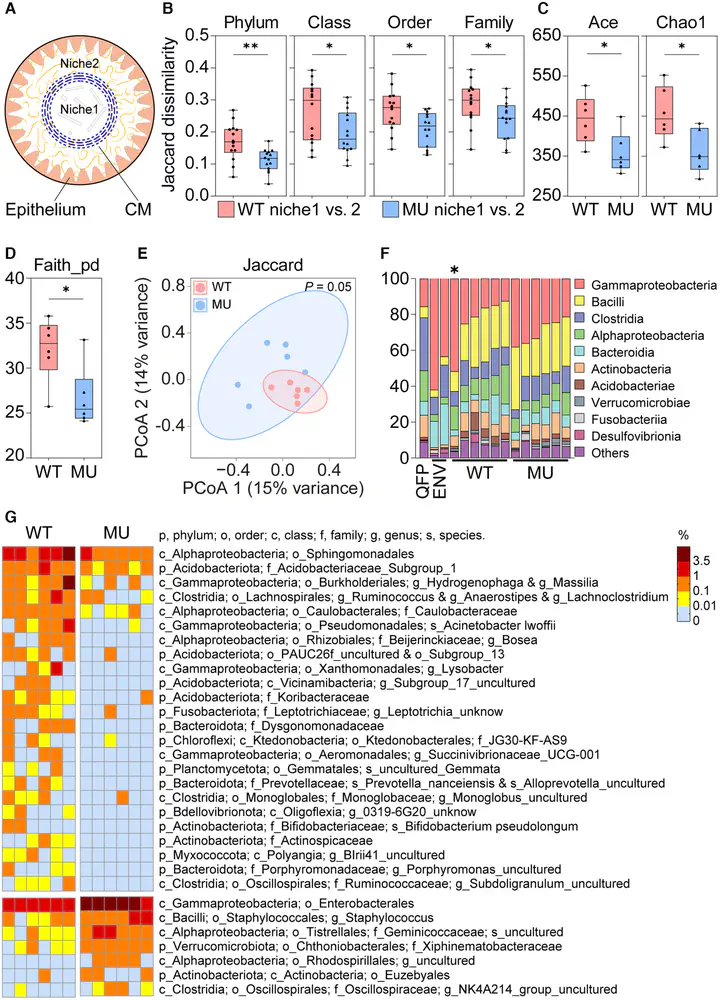Differential roles of the fish chitinous membrane in gut barrier immunity and digestive compartments
 Microbiome Analysis in this paper
Microbiome Analysis in this paper
Abstract
The chitin-based peritrophic matrix (PM) is a structure critical for both gut immunity and digestion in invertebrates. PM was traditionally considered lost in all vertebrates, but a PM-like chitinous membrane (CM) has recently been discovered in fishes, which may increase the knowledge on vertebrate gut physiology and structural evolution. Here, we show that in zebrafish, the CM affects ingestion behavior, microbial homeostasis, epithelial renewal, digestion, growth, and longevity. Young mutant fish without CM appear healthy and are able to complete their life cycle normally, but with increasing age they develop gut inflammation, resulting in gut atrophy. Unlike mammals, zebrafish have no visible gel-forming mucin layers to protect their gut epithelia, but at least in young fish, the CM is not a prerequisite for the antibacterial gut immunity. These findings provide new insights into the role of the CM in fish prosperity and its eventual loss in tetrapods. These findings may also help to improve fish health and conservation, as well as to advance the understanding of vertebrate gut physiology and human intestinal diseases.